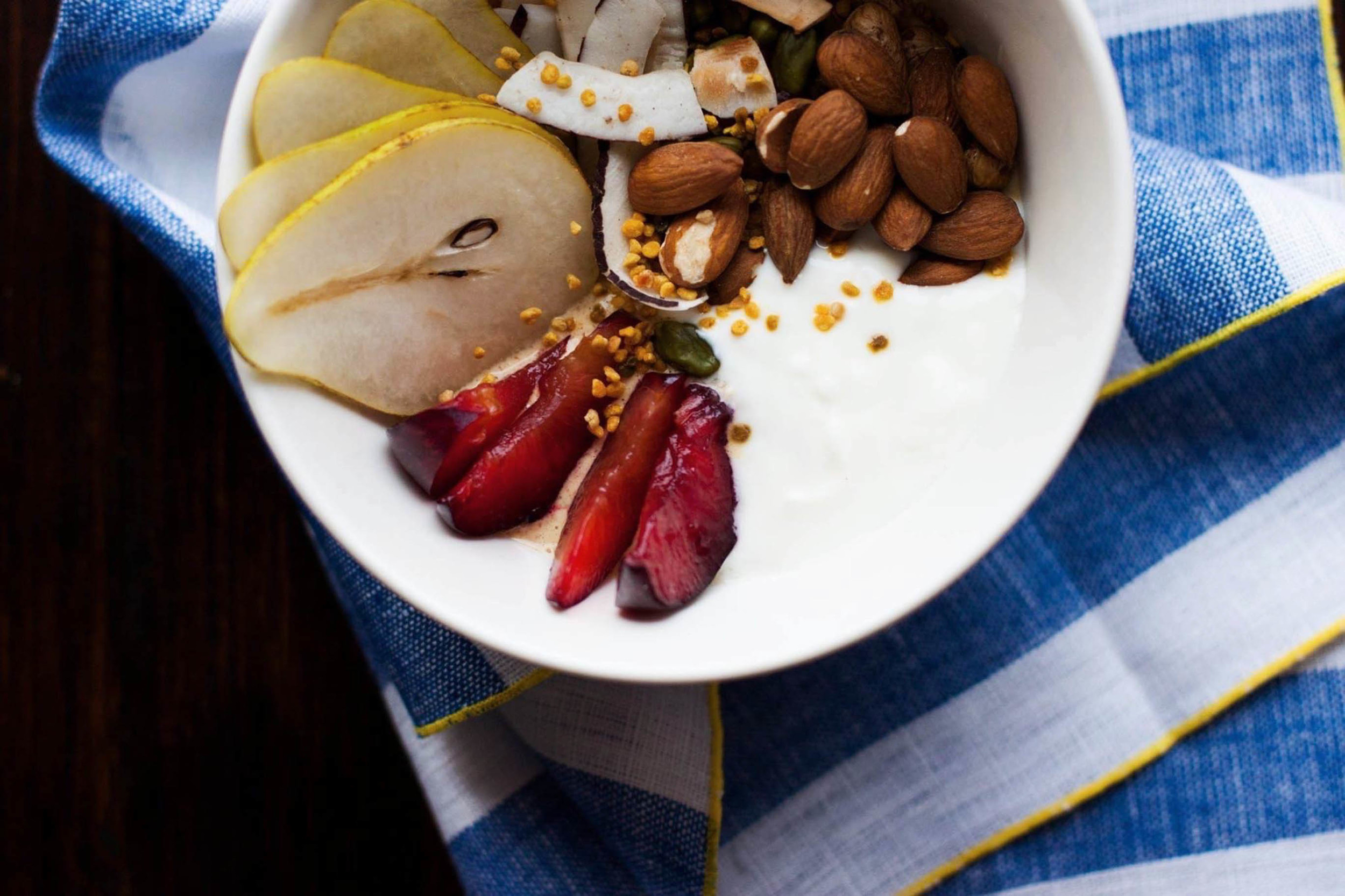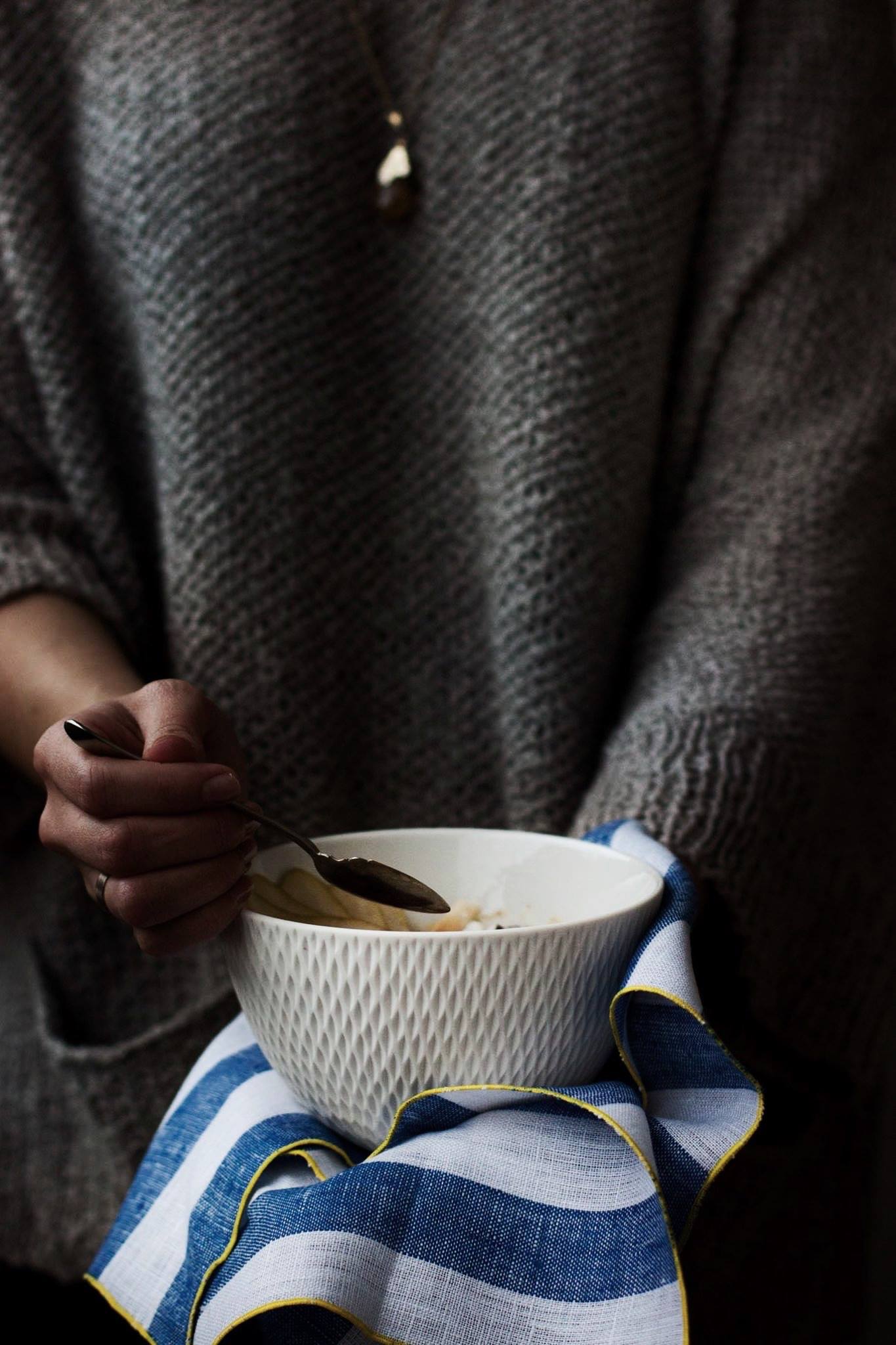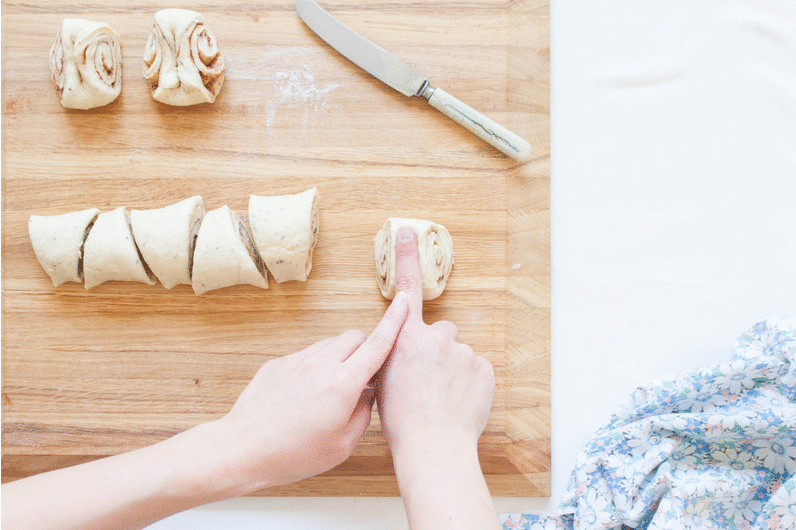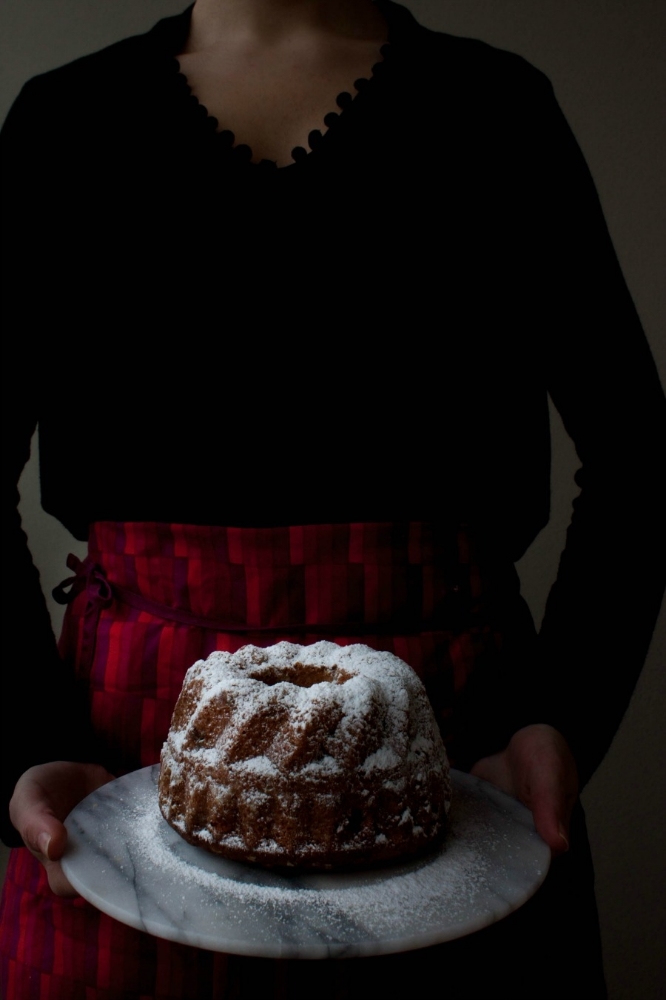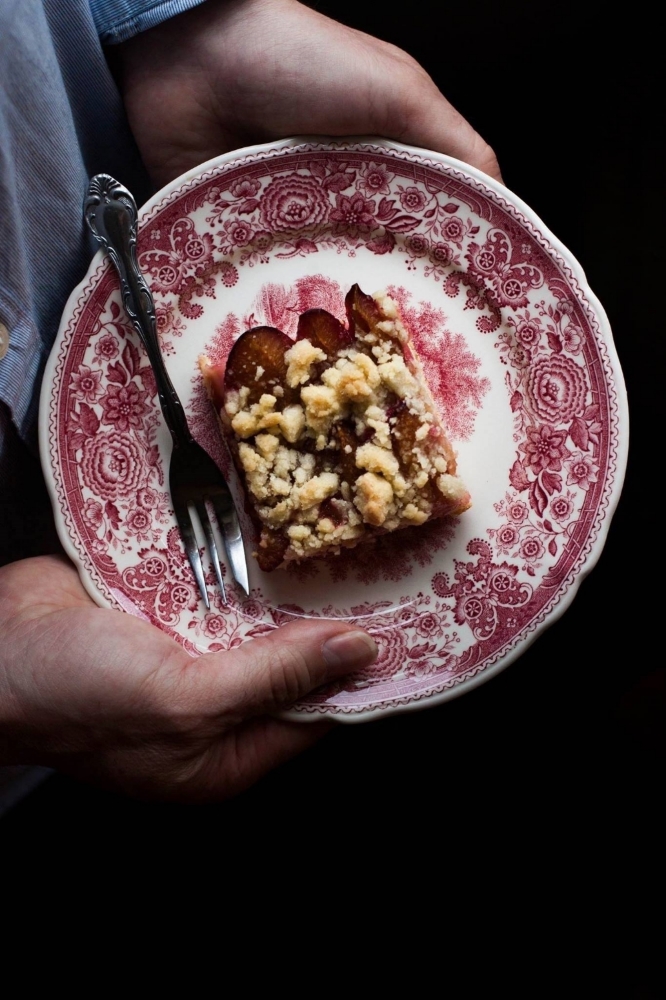A few weeks ago I was at the grocery store wondering what to make for dinner. I stood in the middle of the vegetable section seeking inspiration. What should I make? My mind was blank. And then I knew it: couscous salad. I took my phone, typed "couscous Ottolenghi", and hit the search button. Scrolling. Finally my eyes locked on the title that said "Green couscous". There it was: my dinner inspiration. Thank heaven!
Why Ottolenghi, you may ask. Well, there are certain guys whose taste buds I truly trust and Yotam Ottolenghi surely is one of them. His recipes never fail to amaze me, and his take on food, especially vegetables, is quite unique. If you haven't made his recipes yet, I encourage you to dive into his culinary world, and if you don't have his books yet, I encourage you to run to the next bookstore. Like right now even if the temperatures are below zero (greetings from the north, everyone!).
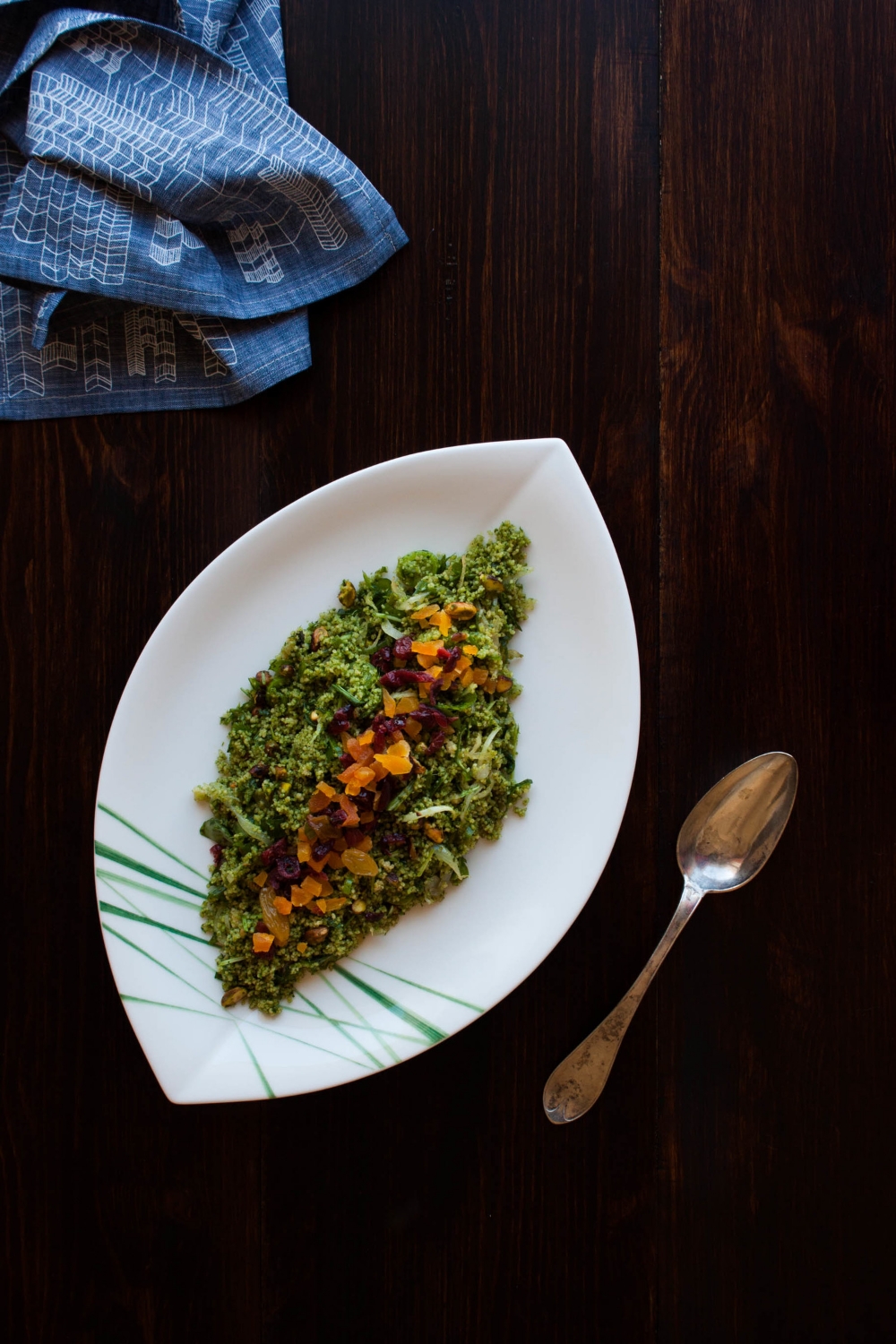


The original recipe calls for parsley but I used kale instead. Actually, this was a result of a misunderstanding. You see, I thought I had a bunch of parsley in my fridge, but as I realized once I got home, I didn't. What I had, however, was kale. Thankfully, it turned out that kale worked great in this recipe! I, furthermore, omitted the green chili and added some tanginess with freshly squeezed lime juice. Inspired by the Israeli Couscous Salad from David Lebovitz, I added some dried fruit when I made it for the second time yesterday. I think the dried fruit made this salad even better and more interesting than it already was.


This salad is one of the best things I've eaten in a while. Packed with herbs and flavor, it makes a great side or main dish. The first time, I had it with grilled salmon and plain yogurt. Yesterday, I first had a serving for lunch and served it as a side with veal roast for dinner. I can also imagine that it would be lovely served with braised lamb or basically any kind of grilled fish. To make a vegetarian-friendly meal, top it with grilled halloumi or feta and pomegranate seeds.
It's a great dish to serve for brunch or a get-together. It's pretty to look at, relatively quick to make (ready in 15 minutes), and can easily be made ahead; it will keep in the fridge for up to two days. Awesome work lunch, anyone? Double or triple the recipe as needed and be ready to respond to numerous recipe enquiries.
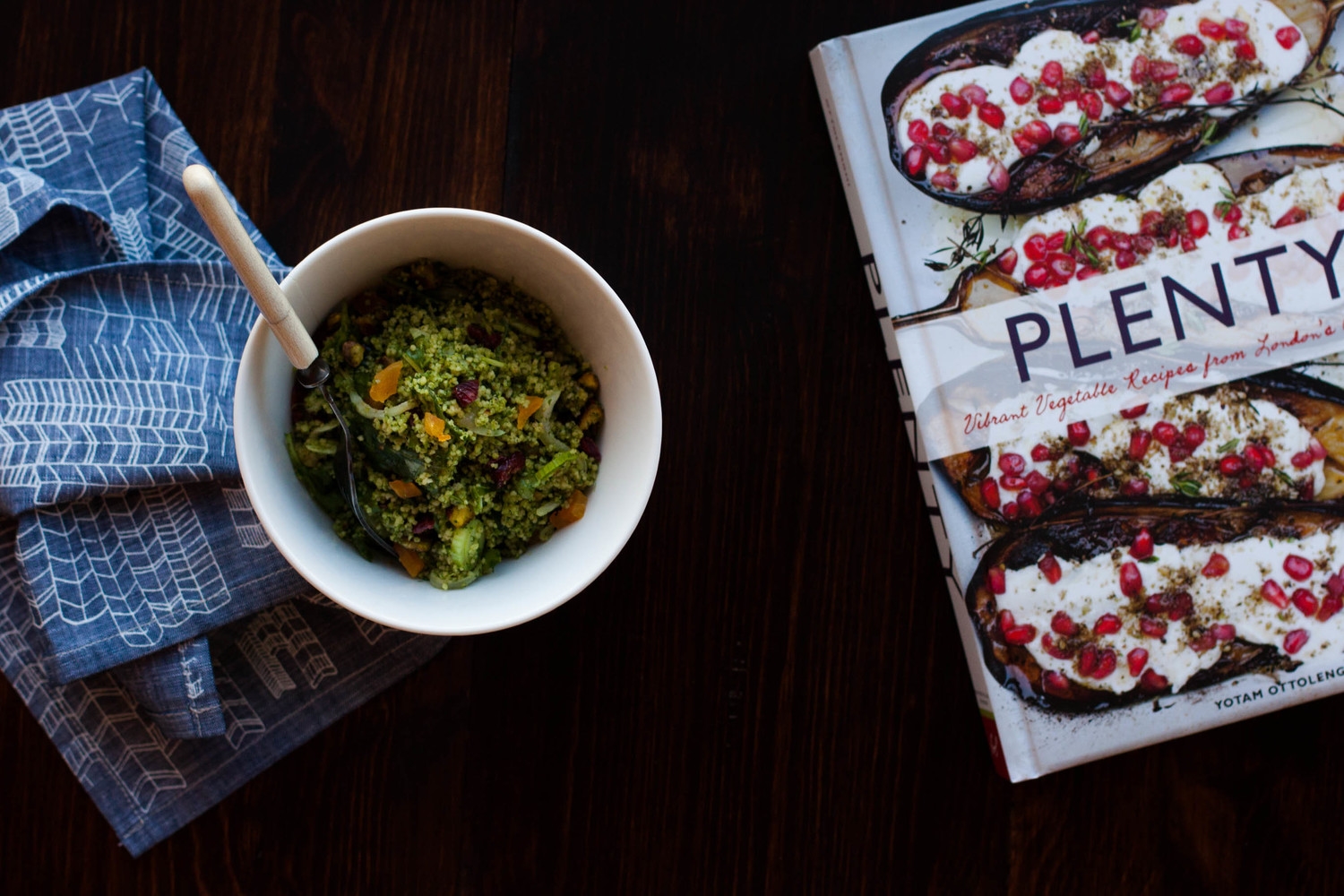

Green Couscous Salad
adapted from Plenty by Yotam Ottolenghi, p. 255
serves 4
2 ½ dl (1 cup) whole-wheat couscous
1 onion, thinly sliced
1 tbsp olive oil
¼ tsp fine sea salt
¼ tsp ground cumin
for the herb paste
packed 1 heaping dl (packed ½ cup) roughly chopped kale
2 ½ dl (1 cup) chopped cilantro
2 tbsp chopped tarragon
2 tbsp chopped dill
2 tbsp chopped mint
6 tbsp olive oil
1 heaping dl (½ cup) unsalted & shelled pistachios, toasted and roughly chopped
3 green onions, thinly sliced
2 large handfuls of arugula, chopped
lime juice, to taste
1 heaping dl (½ cup) diced dried fruit, such as apricots, cherries, cranberries, or sultanas
optional: plain yogurt, to serve
In a small pot, bring 160 ml (¾ cup) water to a boil. Take off the heat, add couscous, cover, and leave for 10 minutes.
In the meantime, fry the onion on medium-high heat until soft and golden. Add salt and cumin. Mix and let cool slightly.
To make the herb paste, place all ingredients in a food processor and mix until smooth. Set aside.
Combine the couscous and herb paste in a large bowl. Use a fork to fluff up the couscous. Add the onions, pistachios, and arugula. Add lime juice to taste. Finally, top with the dried fruit. Serve lukewarm.



















